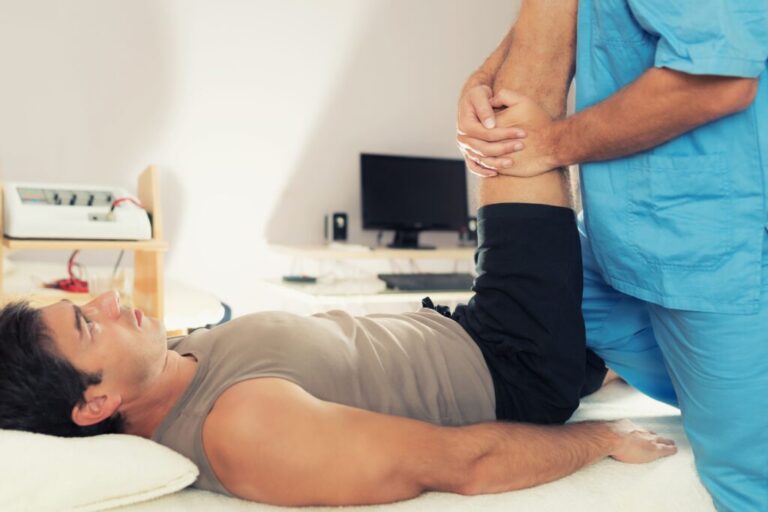Do you suffer from severe back pain? Your legs hurt, and there are even signs of paralysis? Sure, it’s a slipped disc. Not necessarily. In many runners, a small muscle in the buttocks can cause the same symptoms. Doctors call it piriformis syndrome. The good news is that it can almost always be treated successfully, and there are useful tips for self-help:
Ideally, the muscle is soft and flexible
It is also called the runner’s muscle. Not because it’s so important, no, actually it’s of minor importance. But with an above-average number of runners, it makes a painful statement. The Piriformis muscle belongs to the deep layer of the hip muscles and is hidden underneath the sizeable vascular muscle. It connects sacrum and thigh and is ideally soft and flexible. But especially with runners, this is quite often not the case. With them, it can then come to the Piriformis syndrome.
Piriformis syndrome has four leading causes:
- The amount of running you do is too enormous and does not match your current ability.
- You have increased the training intensity too quickly.
- Your running technique is not optimal, and corrections are needed.
- Your running shoes have worn out, or you wear shoes that do not fit you.
Overstrained muscles cause pain
If one or more reasons apply, the hip muscles, which are mainly responsible for running, are overstrained. So auxiliary muscles have to step in, and the piriformis is one of them. It tenses and shortens and then at some point presses directly on its famous neighbor: the sciatic nerve. A trained doctor can determine whether the piriformis is affected by applying targeted pressure to particular trigger points. Unfortunately, however, far too few doctors carry out this examination. Instead, they suspect a slipped disc, because the symptoms are similar:
- There is a stabbing pain in the buttocks.
- The pain can radiate into the back of the thigh.
- Tingling sensations and numbness occur.
Piriformis syndrome is widespread
With these symptoms, it is, of course, essential to use modern imaging techniques to rule out a herniated disc. And, unfortunately, far too often damage to the intervertebral discs is also visible. Especially in Germany, surgeons like to use a scalpel. Now at least 100,000 times a year. Far too often, as many experts criticize because in nine out of ten cases, surgery is unnecessary. The problem: many patients continue to suffer from back pain after the operation, and the original problem still exists. And this is very often piriformis syndrome. A US study showed that 42 percent of all patients operated on an intervertebral disc were suffering from piriformis syndrome.
Two simple test forms
Two types of tests can be used by doctors or physiotherapists trained in manual therapy to detect Piriformis Syndrome:
- Straight-Leg-Raise-Test (SLR): The patient lies on his back, and the doctor or therapist slowly lifts an inserted leg upwards. If pain occurs, it is the spine or the sacrum that is the trigger and not the small muscle.
- FAIR-Test: the patient lies on the side that does not hurt. The doctor or therapist grasps the leg resting on top, brings it into the 90-degree flexion, and then carefully follows it up to 60-degree. On the other hand, they press on the polar muscle. That can cause pain, and the doctor or therapist can feel a hardening.
Muscular imbalances
If left untreated, the sciatic nerve can become trapped, causing severe pain and taut muscles. Affected people usually adopt a different posture to alleviate the pain a little. However, this only leads to muscular imbalances and further complaints. It is, therefore advisable to consult a good doctor or therapist as soon as the first symptoms appear.
These therapies can help
- Pain therapy: For pain relief, ultrasound and ice spray (sometimes doctors also prescribe so-called non-steroidal anti-inflammatory drugs).
- Trigger point massage: A long-term solution to the problem is a myofascial trigger point therapy that has proven to be very useful. Appropriately trained physiotherapists push their fingertips deep under the skin. It makes waves under the rhythmic movements, and thus the tensions are released.
- Stretching: With regular stretching exercises, the affected area can loosen up.
- Medical treatment: In particularly severe cases, doctors inject anesthetics and corticoids. Sometimes an operation is necessary so that the piriformis can no longer press against the sciatic nerve.
Help for self-help with piriformis-syndrome
However, patience is required. The treatment can last for two to three months. In addition to the medical measures, those affected can also do quite a lot themselves. Both for prevention and therapy:
- Training schedules: Overwork is one of the main reasons for Piriformis Syndrome. Training should, therefore, be reconsidered and adapted to individual abilities.
- Strength training: running improves endurance, but essential muscles weaken. Studies have shown that especially the hip adductors – the muscles that allow us to move one leg sideways – suffer when running. These include the large and small pole muscle and the piriformis muscle. Even twice a week, 20 to 30 minutes are enough to do specific work here. Regular core training is also essential.
- Leg length: Many people suffer from a difference in leg length, which leads to muscular imbalances and, thus, also to piriformis syndrome. Sometimes this can be corrected manually by a therapist. If this is not possible, orthopedic insoles can help.
- Stretching: Targeted stretching exercises and working with the foam roller can also help to prevent and correct existing problems.

This article has been thoroughly researched, but of course it cannot replace a visit to the doctor.
